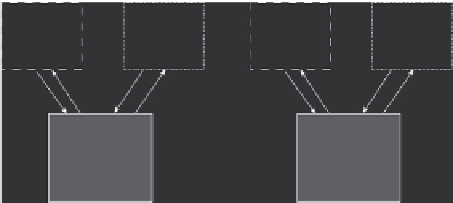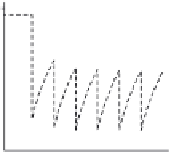Biology Reference
In-Depth Information
Treatment in the homogeneous model is made comparable with the
heterogeneous model by setting coverage to g
0
¼
g*n
c
. Simulations of these
different scenarios are presented in
Figure 9.11
, where the worm burdens
in school-aged children and other age groups (where applicable) and
averaged across the community are presented for different modeled
scenarios, helminthes, and treatment intervals. The unbalanced mixing
(A)
(B)
(C)
Homogeneous model
Heterogeneous model
Heterogeneous model
with different exposure and
deposit rates
Child
hosts
Adult
hosts
Child
hosts
Adult
hosts
Hosts
p
β
p
β
2p
2
β
p
β
Infectious
Reservoir
lnfectious
reservoir
lnfectious
reservoir
Annual treatment
-1
0
1
2
3
4
5
6
-1
0
1
2
3
4
5
6
-1
0
1
2
3
4
5
6
Years since first treatment
Years since first treatment
Years since first treatment
6-monthly treatment
-1
0
1
2
3
4
5
6
-1
0
1
2
3
4
5
6
-10123456
Years since first treatment
Years since first treatment
Years since first treatment
FIGURE 9.11
Effect of regular treatment on mean
A. lumbricoides
worm burden for
different models. (A) Homogeneous population (left column), (B) heterogeneous pop-
ulation with uniform transmission dynamics (central column), and (C) heterogeneous
population with greater contribution from children (right column) as in the text. The two
rows represent annual and half-yearly treatment, respectively. For all runs, basic repro-
duction number is 3 and worm lifespan is 1 year. Other parameters (as defined for Eqs.
(9.15) and (9.16)
):
m
2
¼
0.93. Reproduced by license from.
55
5/yr, k
¼
0.7, z
¼






























































































































